MARIPOSA WEAVE.— (Knotted)
SHOWING COMMENCED BOTTOM OF BASKET, WITH FINISHED MARIPOSA BASKET.
The canoe-shaped basket, whose illustrations form a part of this lesson, has the very characteristic Indian design of butterflies. Anyone could add to its beauty by weaving in the white Indian beads in the dark-brown points. In a later chapter we shall give full directions for the weaving of beads.
SETTING IIP THE BASKET.
In setting up the basket, you will observe that it is oval shaped. But the workers may follow out their own individual ideas as to the shape, etc., making the “start” longer or shorter as fancy dictates.
First—Cut the end of the reed off squarely. Measure off six, eight or ten inches (whatever is desired) upon the reed.
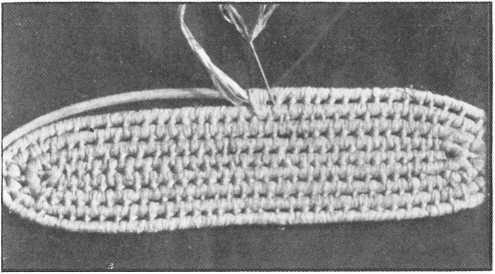
Commenced Basket, Mariposa Weave.
Take the reed in both hands and at the point marked off, bend it very slowly and carefully into a bowl of hot water, holding there fully five minutes.
Take the reed out and gently bend it, working with the fingers until you can bring the reeds together without breaking. Do not be dismayed should it split a little. It will do no harm, as it is covered with raphia. In our general directions for setting up an oval basket, we say soak the reeds one hour, in hot water, which is perhaps the better way until one has become more accustomed to handling the reeds. Some of our more experienced workers do not leave the reeds more than five minutes in very hot water, but they draw them through the fingers until they become quite pliable, and it really becomes optional with the workers in what manner they prepare the reeds after having had just about so much experience.
SELECTION OP RAPHIA.
Next thread your large needle with a leaf of raphia. Select uniform leaves, or place two strands together. Be careful to keep the thread the same size for the weaving. You will very soon see the necessity for so doing if you desire the beautiful results that the Indian women bring out in their weaving.
WEAVING.
Take the bent reed in your left hand, holding it so that the short end of the reed comes next you. Take your threaded raphia and about three or four inches from the end of the thread (not the needle end,) commence wrapping toward you (the opposite from the Navajo weave, which is wrapped from you,) two or three times around the bend of the reed. This is to cover the reed, and any little break or split that may have come in the shaping. When the bent end of the reed is covered smoothly, wrap once around the long reed, then over the long and short reed, binding them together.
Bring the needle up between the two reeds at the left side, and cross over this stitch which holds the two reeds together, going down between the reeds at the right side, and up, back of the crossed stitch, and coming over so as to wrap the one reed again, and then wrapping the two reeds as before.
This gives the knotted effect, by crossing the long stitch, holding the two reeds together, making a beautiful and substantial basket, capable of taking any design or shape.
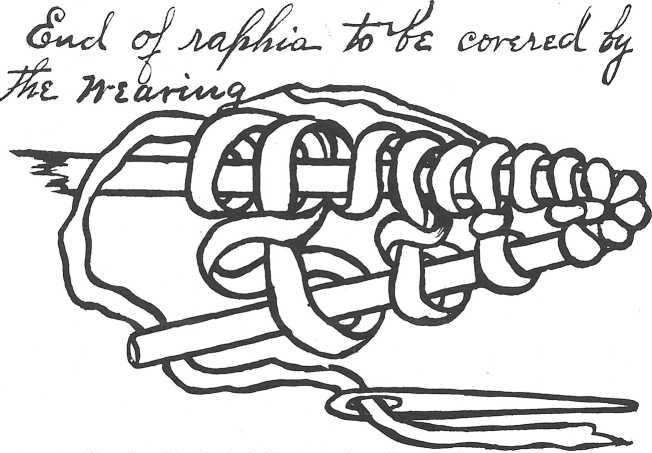
Showing Method of Commencing Mariposa Weave.
THE INTRODUCTION OF COLOR.
The introduction of color for the design, may seem somewhat difficult, but we can assure the workers that they will be pleasantly surprised to find themselves weaving in the designs without any particular effort.
As we have said before, in our “general directions for a coiled basket,” weaving in the color, means the filling in of a certain space, always, remembering that each coil is covered twice. It is this covering of the reed twice which may puzzle the worker, when putting in the design. Take your colored raphia and splice under the natural, just as we do in our “general directions” for a continuous-coiled basket, carrying the natural thread along under the colored, and reversing the order of things when weaving with the natural.
DIVISION FOR THE DESIGN.
Place your woven placque upon a piece of paper, mark around it and cut out the oval, folding it into such divisions as you desire your design to fill. Mark these clearly with a pencil, upon your placque, by placing the marked oval upon it.
We would suggest that the worker weave the bottom of the Mariposa basket two and one-half inches wide before beginning to shape the basket. However, it is optional as to the size, for if the bottom were broader, the sides would not be so high—just as the canoe whose shape has been copied. The beautiful shaping of these baskets by the Indians seems marvelous.
To give that swell peculiar to this shape, the worker will commence rounding the ends only, by placing the reed directly over the bottom reed already covered with weaving, leaving about seven and one-half inches upon each side flat, rounding up only the ends until the bottom is three and three-fourths inches wide. The basket is now ready for the shaping of sides. Do this by slightly raising the coil of reeds above the under coil, being careful to hold your reeds firmly while weaving.
While shaping, the thought might suggest itself to the worker, “Why, how am I to add in stitches to cover the added space of reed by the rounding out of the basket?”
This is very simple. Just add in where it seems best, an extra knotted stitch, which of course brings two in the space of one, but this does not show when the basket is finished. In the basket which we have used to illustrate this lesson, we have introduced the design at the same time that we commenced shaping the sides.
We give the measurements for this basket, and while the workers may use any design they desire, we selected this simple, but thoroughly Indian, idea of butterflies, thinking it would be less puzzling in the introduction of color than a more elaborate one. Use for this basket a coarse reed, No. 5.

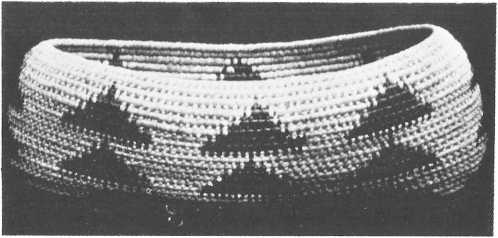
Finished Mariposa Basket.
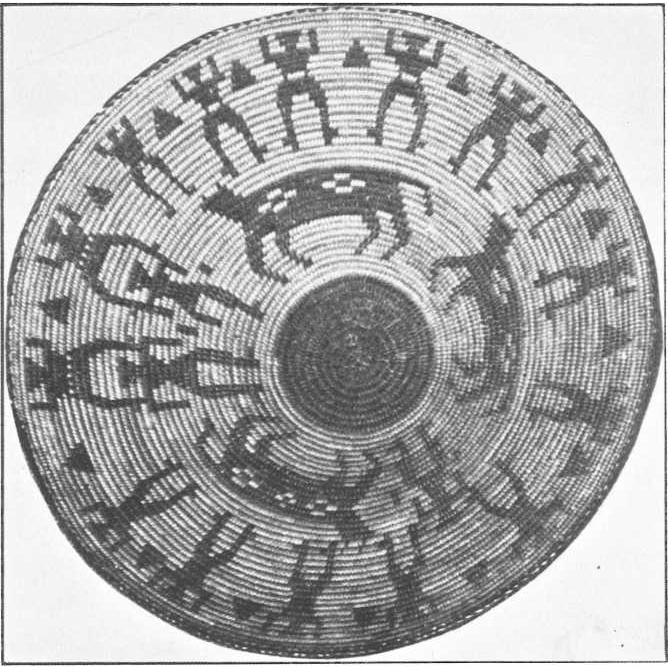
Apache War Basket, Very Shallow, Depth 4 inches, Circumference 51 3-4Inches. Design Black.
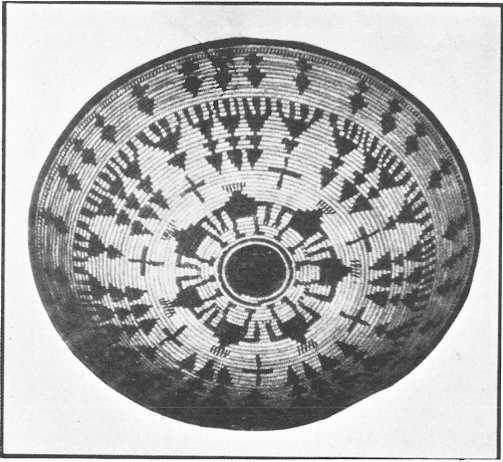
Apache War Basket.
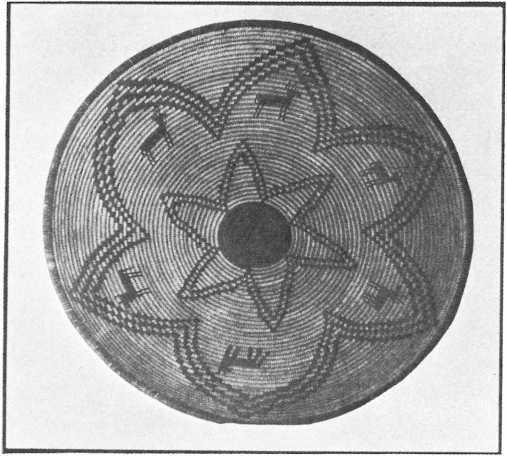
Apache Star Basket, Design Worked Out in Black.
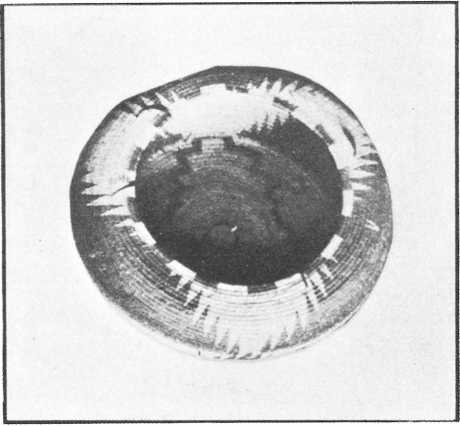
A Yolo Treasure Basket.
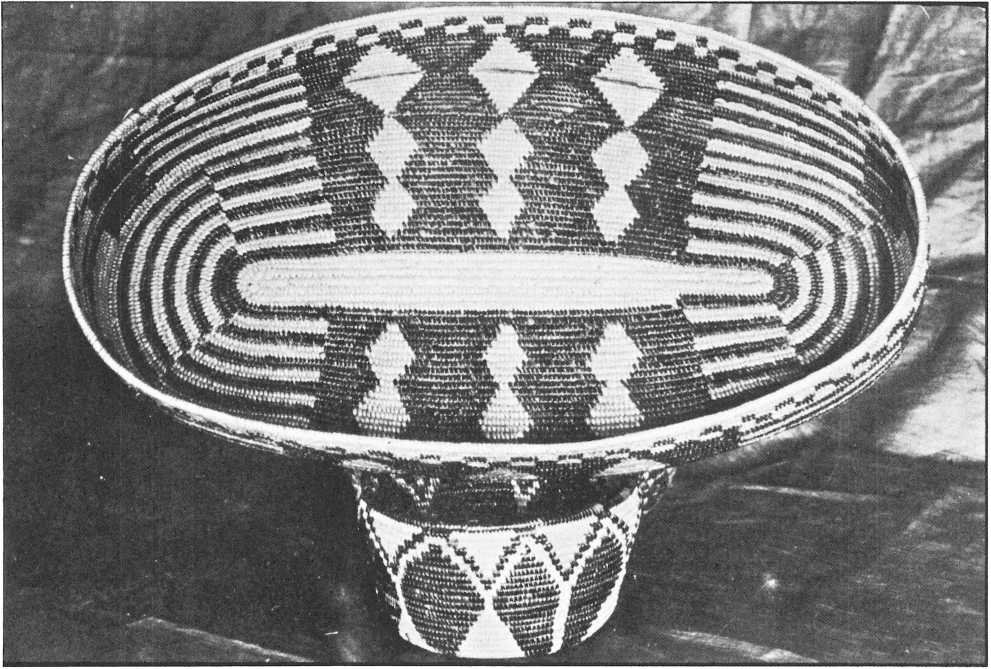
Baskets From San Jacinto Reservation.
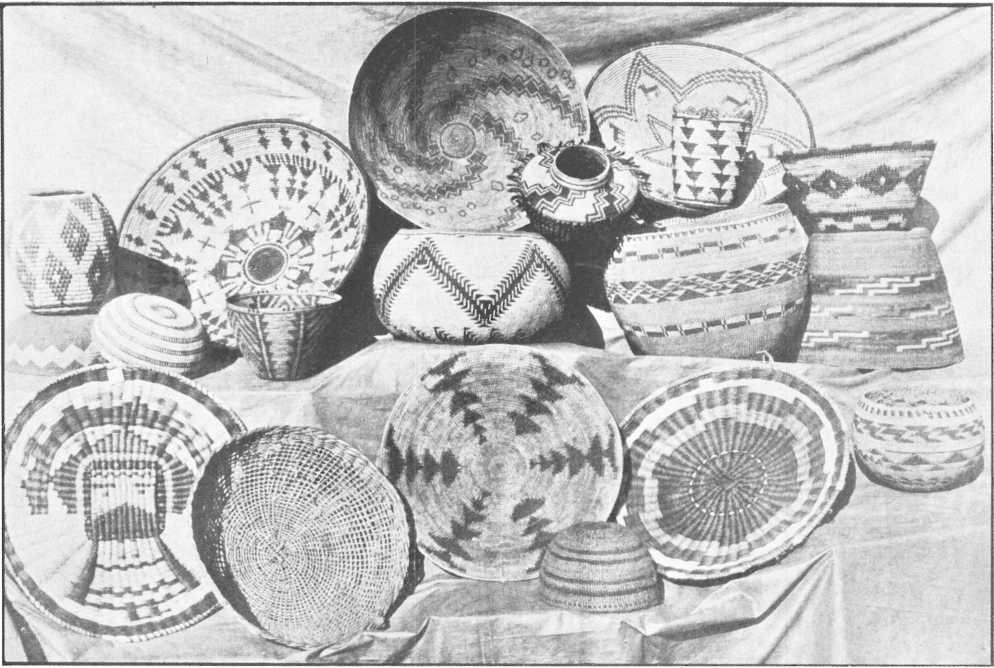
Coiled Hopi Tray. Klamath Gambling Tray. Klikitat Baskets. Apache War Baskets and Porno Upright Weaves.
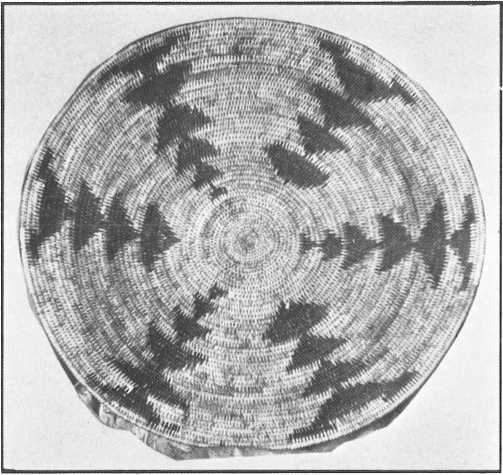
Klamath Gambling Tray, Showing Arrow Points.
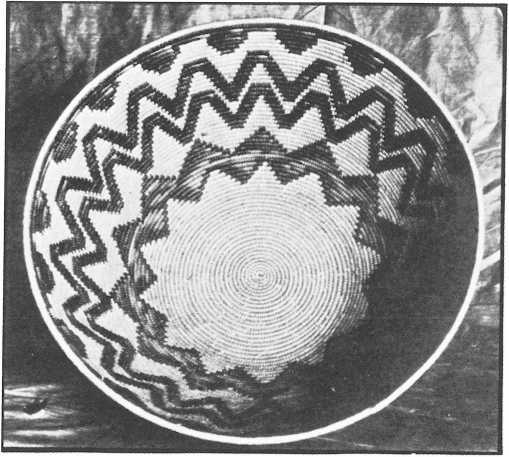
A Saboba Ceremonial Basket.